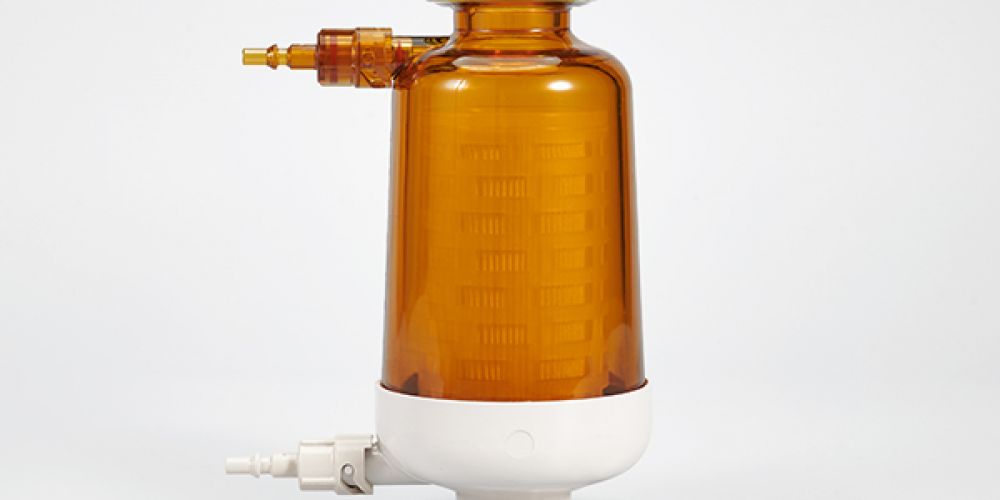
Capsule filter is a kind of filtering equipment widely used in biotechnology, pharmaceutical, food processing and other fields. Its core component, the filter element, adopts advanced thermal bonding process to ensure its efficient and stable operation. The following is a detailed explanation of the efficient solution of thermal bonding process of filter element:
Thermal bonding process is a technology that uses heat energy to combine two or more materials. In the manufacture of filter elements of capsule filters, thermal bonding process is used to firmly combine filter media such as polyethersulfone membrane with supporting structure (such as filter element skeleton). This process not only improves the structural stability of the filter element, but also avoids the pollution problems that may be caused by the use of chemical adhesives.
1.Material preparation: First, high-quality polyethersulfone membrane and other necessary filter media materials need to be prepared. These materials need to be strictly screened and tested to ensure that they meet production requirements.
2.Pretreatment: Before thermal bonding, polyethersulfone membrane and other materials need to be pretreated. This includes steps such as cleaning, drying and necessary surface treatment to ensure the cleanliness and adhesion of the material surface.
3.Thermal bonding equipment settings: According to production requirements, adjust the parameters of the thermal bonding equipment, such as temperature, pressure and time. The setting of these parameters is crucial to ensure bonding quality and production efficiency.
4.Thermal bonding operation: Place the pretreated polyethersulfone membrane and other materials in the heating area of the thermal bonding equipment. During the heating process, the melting point of the polyethersulfone membrane is reached, and the materials begin to soften and fuse with each other. At the same time, by applying appropriate pressure, ensure that the materials form a tight bond.
5.Cooling and shaping: After the thermal bonding is completed, the filter element needs to be cooled and shaped. This step helps to ensure the firmness of the bonding point and the overall stability of the filter element.
1.Efficient and stable: The thermal bonding process can ensure a tight bond between the filter medium and the supporting structure of the filter element, thereby improving the structural stability and filtration efficiency of the filter element.
2.Avoid pollution: Compared with chemical adhesives, the thermal bonding process avoids the use of potential chemical pollutants, thereby reducing the risk of contamination of the filter medium.
3.Improve production efficiency: The thermal bonding process is efficient and fast, which can significantly improve the production efficiency of the filter element.
The filter elements made by thermal bonding process of membrane capsule filter have been widely used in many fields:
1.Biotechnology: used for filtration and purification of biological products such as cell culture medium and vaccines.
2.Pharmaceuticals: used for filtration and sterilization of large infusion (LVP) and medical chemical solutions.
3.Food processing: used for filtration and clarification of foods such as beer, wine, juice and bottled water.
The filter elements made by thermal bonding process of membrane capsule filter have significant advantages such as high efficiency and stability, avoiding pollution and improving production efficiency, and have been widely used in many fields. With the continuous advancement of technology and the continuous development of the market, the application prospects of thermal bonding process in the manufacture of membrane capsule filter elements will be broader.